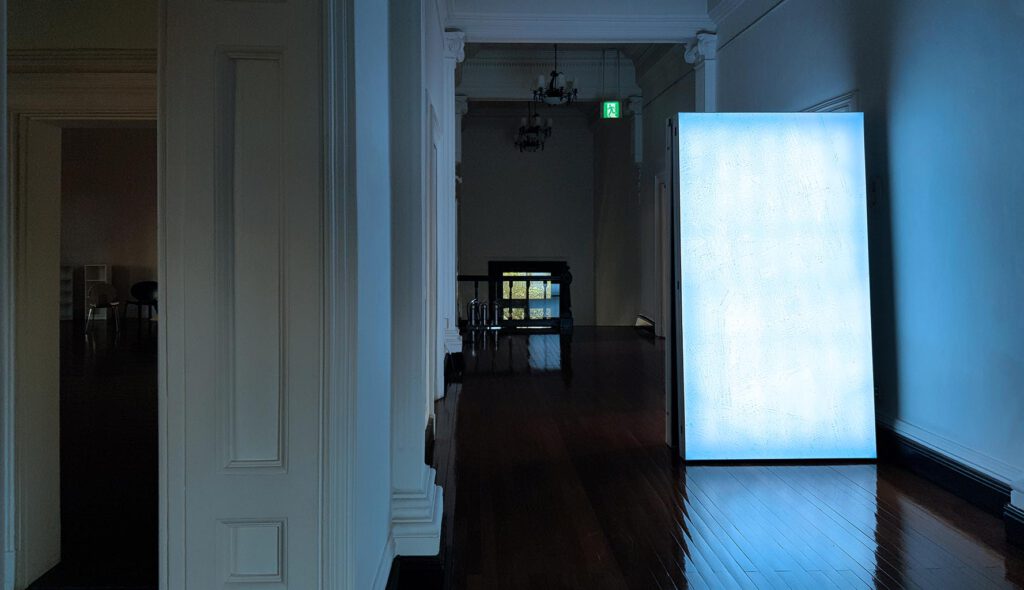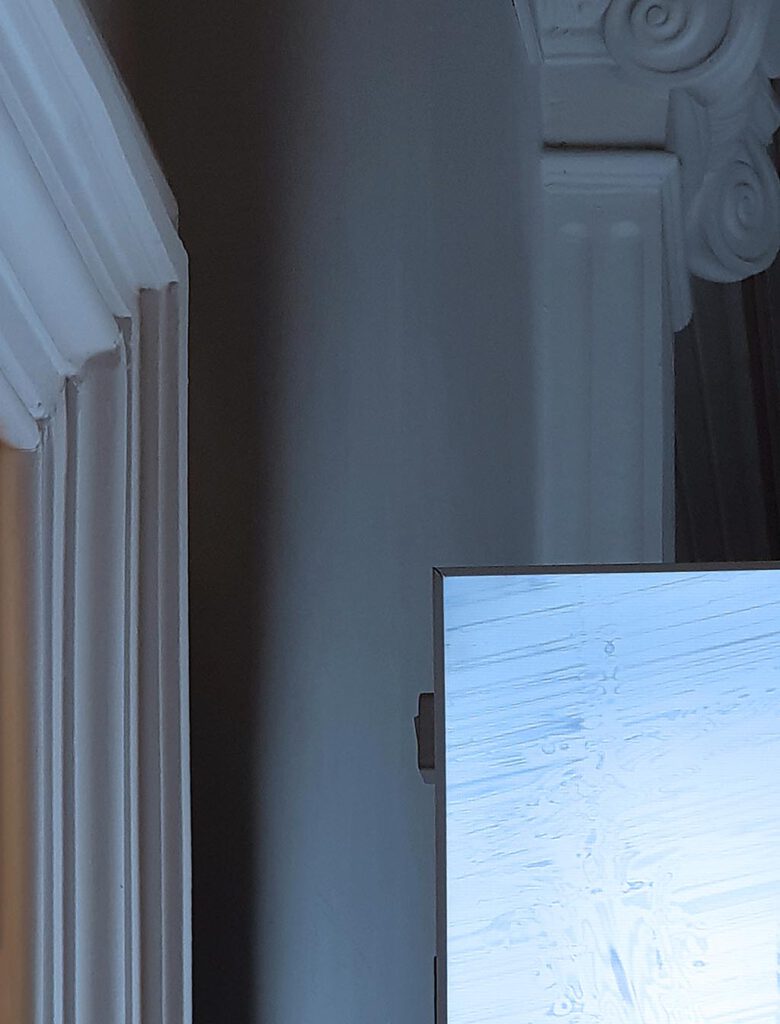
Liquid Urbanism – Seoul I & II
by Ryul Song and Christian Schweitzer / 송률, 크리스티안 슈바이처
Lightbox with digital print on pvc foil, 1.4 x 2.5 meters, 2021
In: Signaling Perimeters
2021.09.28 – 11.07
Curated by Sungmin Lee / 이성민
Nam-Seoul Museum of Art, Seoul / 서울시립 남서울미술관




The concept of the ‘functional city’ changed how we live and work, where we live and work, and how local communities relate to each other. The separation of living, working, and recreation resulted in the endless repetition of the same rigid patterns, mono-functional apartment complexes, the car orientated city. It is a top down planned, strictly hierarchical city, where the unhindered flow of goods, commerce, workforce, and money has the foremost priority. Everything that has no apparent economic advantage is understood as useless, inefficient, or even as an obstacle within the city. This shifts our understanding of the city not as a place for its inhabitants as the homo socialis (the social being), but as a place for its inhabitants as the homo economicus (the economic being). We have to function for the city, not the city has to function for us.
The Liquid Urbanism series tries to counter this narrative. By liquefying the existing city plan, by obscuring its readable functions, a different way of looking at the city emerges. We can start to see the city not as an agglomeration of streets, houses, schools, hospitals but as points of identification, as in-between spaces, as materiality. We can start to imagine the city as a social organism, as the passage of time, as a multitude of human experiences and interactions. It shifts the perception of the city away from economically quantifiable objects towards a holistic lebensraum (habitat), where everyone can find a place they can identify as their own. It calls for the homo fabulans (the story-telling being) where the flow of thought and imagination can be a start for a different city, a humanistic city, a city of equality and equal representation of every inhabitant.

‘기능적 도시(functional city)’는 우리가 어디에 살고 어디에서 일하는지를, 어떻게 살고 어떻게 일하는지를, 그리고 지역 공동체가 어떻게 다른 사람들과 관계를 맺는지를 변화시킨다. 거주와 일 그리고 여가 장소들의 분리와 구획은 규칙적인 딱딱한 패턴, 단일 기능의 아파트 단지, 자동차 중심의 도시가 끊임없이 반복되는 결과를 가져온다. 이 개념은 상품, 상업, 노동력 그리고 돈의 지속적인 흐름을 방해하지 않도록 엄격하게 위계적인 도시를 만들며, 자연발생적인 도시에 비하여 톱다운 즉 하향식으로 계획된 도시이다. 이러한 도시에서는 분명한 경제적 이점을 갖지 않는 다른 모든 것은 쓸모없는 것이며, 비효율적이거나 심지어 도시 내 장애물로 이해된다. 이것은 도시에 대한 우리의 이해를 호모 소시알리스 homo socialis (사회적 존재)로서의 거주민을 위한 장소가 아니라 호모 이코노미쿠스 homo economicus (경제적 존재)로서의 거주민을 위한 곳으로 변화시킨다. 더이상 도시가 우리를 위하여 기능하는 것이 아니다. 우리가 도시를 위해 기능하는 것이다.
Liquid Urbanism 시리즈는 이러한 도시적 현상에 대한 저항이다. 기존 도시의 지도를 액체화하여 눈에 보이는 기능들을 모호하게 함으로써 도시를 인식하는 다른 방식을 유도한다. 도시를 그저 길, 집, 학교, 병원 등의 집합체로 인식하는 것이 아니라 비로소 우리는 도시를 고유성을 지닌 식별의 지점으로, 사이공간으로, 재료의 물성으로 인식하기 시작한다. 도시를 사회적 유기체로, 시간의 흐름으로, 수많은 인간의 경험과 상호작용으로 상상한다. Liquid Urbanism 시리즈는, 모든 것을 경제적으로 정량화하던 도시로부터 모든 사람들이 자신과 동화 할 수 있는 장소를 갖게되는 총체적 삶의 공간으로 도시에 대한 인식을 변화시킨다. Liquid Urbanism 시리즈는 호모 파불란스 homo fabulans (서사적 존재)를 원한다. 서사적 존재는 생각하고 상상하며 다른 도시, 인본주의 도시, 모두가 평등한 도시, 모든 거주자의 재현과 표상이 평등한 도시 만들기를 시작할 것이다.

